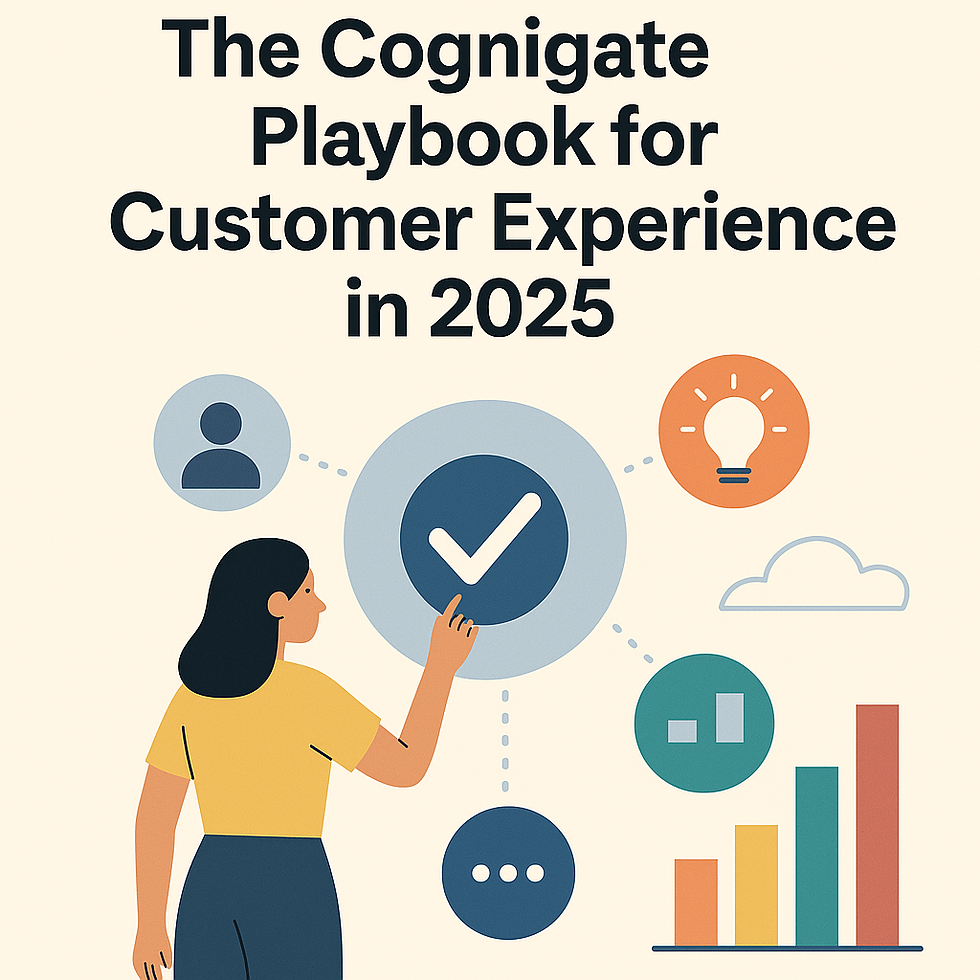- Cognigate Advisory Team

- Aug 28
- 3 min read

Introduction: Why Integration Strategy Is Now a Board-Level Question
Integration used to be an IT back-office concern. Today, it’s a strategic decision that directly impacts agility, compliance, and customer experience.
Gartner predicts that by 2026, 75% of organizations will standardize on a hybrid or multi-cloud integration strategy (Gartner).
McKinsey adds:
“The ability to integrate applications and data sources at speed is now a competitive differentiator in every industry.”
For CIOs and CTOs in the UAE and MENA, the question is no longer if to integrate, but how: Cloud, On-Premises, or Hybrid.
The Three Integration Models
1. Cloud Integration
Cloud-native integration platforms (iPaaS) connect SaaS apps, CRMs, ERPs, and analytics tools.
Advantages
Fast deployment, pay-as-you-go pricing.
Scales easily with new apps.
Prebuilt connectors for tools like Freshworks, Creatio, Profit.co.
Challenges
Data residency concerns (common in UAE/KSA government).
Latency in real-time systems.
Vendor lock-in.
When to Choose
Startups, scale-ups, and private enterprises with SaaS-heavy stacks.
Organizations prioritizing agility and cost efficiency over strict compliance.
2. On-Premises Integration
Traditional Enterprise Service Bus (ESB) or API gateways deployed in-house.
Advantages
Full control of data and infrastructure.
Meets strict regulatory requirements (banks, defense, government).
Customizable for legacy systems.
Challenges
High upfront costs and maintenance.
Slower to adapt to new SaaS applications.
Requires in-house expertise.
When to Choose
Highly regulated sectors (government, telecom, finance).
Organizations with legacy-heavy systems that cannot move to cloud.
3. Hybrid Integration
Combines cloud iPaaS with on-prem ESB/API gateways, enabling data to flow securely between SaaS apps and legacy systems.
Advantages
Best of both worlds: agility + compliance.
Supports gradual modernization.
Allows workloads to move between environments.
Challenges
Governance complexity.
Requires strong architecture and monitoring.
When to Choose
Enterprises in transition to cloud.
Governments balancing innovation with regulation.
Multinationals with distributed data environments.
Cognigate’s 4-D Perspective on Integration Strategy
Discover
We start with business drivers, not tools. For example, a government client may prioritize data residency while a retailer may prioritize real-time personalization.
Design
We architect integration with HX (Human Experience) in mind. Systems must be invisible to users while delivering seamless journeys.
“Integration should be like electricity: unseen, but powering everything.” — Cognigate
Deliver
We leverage platforms like Peliqan for data orchestration and Boomi for enterprise-grade automation, combined with Freshworks and Creatio to connect CX, EX, and operations.
Drive
We embed monitoring dashboards and governance so integration remains sustainable and measurable.
Deloitte confirms this approach:
“Organizations that implement integration as a continuous capability, rather than a one-time project, achieve 2.5x higher ROI from digital initiatives.”
Integration Strategy in the UAE/MENA Context
Government: UAE and KSA require data sovereignty. Hybrid is often the compromise — cloud agility for front-end, on-prem for citizen data.
Telecom: Operators must integrate legacy billing with modern CPaaS, demanding hybrid approaches.
Education: Universities need to connect student portals, ERPs, and learning platforms — often moving fully cloud.
F&B/Retail: Omni-channel experiences depend on rapid cloud integration of POS, CRM, and e-commerce.
Executive Playbook: How to Choose
Step 1 — Define Priorities
Compliance vs agility?
Cost efficiency vs control?
Short-term projects vs long-term transformation?
Step 2 — Evaluate Use Cases
Are most workloads SaaS (CRM, HR, ticketing)? Cloud may fit.
Do you run critical systems in data centers? On-prem or hybrid.
Step 3 — Assess Talent and Skills
Do you have in-house middleware expertise?
If not, cloud/hybrid with SI support is more sustainable.
Step 4 — Plan Governance
Who owns integration? CIO, CTO, or business units?
Establish security, compliance, and SLA monitoring upfront.
Step 5 — Future-Proof
Select platforms with scalability and connectors (Boomi, Peliqan).
Ensure flexibility to move workloads as regulations and markets evolve.
Conclusion: Integration as Strategic Muscle
The right integration strategy is not about IT preference — it’s about aligning technology with human and business outcomes.
Cloud: Agility and cost efficiency.
On-Prem: Control and compliance.
Hybrid: Balance and adaptability.
Gartner reminds us:
“Integration is the enabler of digital business. Without it, digital transformation stalls.”
At Cognigate, we see integration not as plumbing, but as the nervous system of transformation. Choosing the right strategy means choosing resilience, speed, and trust.


